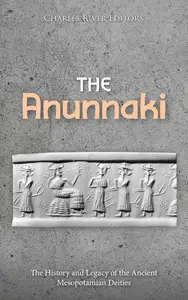
Free Download The Anunnaki: The History and Legacy of the Ancient Mesopotamian Deities by Charles River Editors
English | July 8, 2024 | ISBN: N/A | ASIN: B0D94T9MKN | 62 pages | EPUB | 5.29 Mb
The ancient world was full of many fantastic cities and places, and like today’s major cities, the great ancient cities were hubs of trade, religion, and science. Writing was first invented in ancient cities, and many important scientific discoveries were also made in them, some of which are still used in the modern world. Among the many cities of the ancient world, Rome and Athens may come to mind first, but the city of Babylon in the land of Mesopotamia was already an ancient, venerated city when the others were still inconsequential settlements.
The region’s religions continue to captivate people for many of the same reasons today’s best known religions and their histories fascinate people. The religion practiced by the ancient Mesopotamians provides a certain mix between the mundane and the surreal, and at the same time aspects of it are both familiar and bizarre to people today. Some find themselves drawn to it based on its preeminent position in religious history as the oldest documented religion in the world. Others become fascinated with the close connections between some of the Mesopotamian religious texts, which include a flood story, a creation story and a story of the righteous sufferer, and their parallels in the Hebrew Bible.
Today the Mesopotamians and their religion are sources of curiosity, but thousands of years ago, the religions were integral parts of their lives. From their birth to their death, deities surrounded them, and whether their social interactions were on the level of a smaller city or that of a larger nation-state, deities played key roles in the social fabric of their society. Whereas the Israelites were one people who worshipped a single god, Mesopotamian religions hailed from many sources that spanned thousands of years. For example, the Sumerian influence resulted in citizens worshipping many deities in Babylon during the Neo-Babylonian Empire.
In ancient Mesopotamia, families formed the basis of local communities, and from that core, states, kingdoms, and empires often derived their identity and legitimacy. Of course, the family unit also played a crucial role in the development of religious beliefs and myths, and one of the most influential is the Anunnaki. Scores of religious texts from ancient Mesopotamia – written in Sumerian cuneiform and Akkadian cuneiform – relate how the Anunnaki were the second generation of gods and goddesses. However, scholars debate their abilities, roles, and even which deities were considered among the Anunnaki. Many texts describe the Anunnaki collectively as guardians of the Underworld, yet in other texts, they are mentioned as protectors of the heavens, and in other texts, they are described as the weavers of human fate. Many of the members of the Anunnaki can be deduced, and sometimes their leaders were named, but it is important to note that none of the people in Mesopotamia ever worshipped this group as a collective. As a result, the Anunnaki’s mysterious and sometimes contradictory nature has resulted in interesting modern interpretations. Although some modern scholars have studied the Anunnaki, most of those studies have focused on specific members of the family, not the group as a whole.










Leave a Reply
You must be logged in to post a comment.